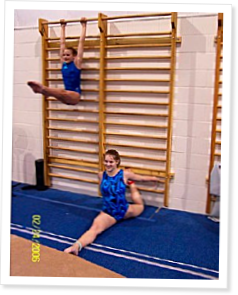 Stall bars are an excellent tool for developing strength, conditioning, and flexibility. A set of stall bars looks like a wide ladder, typically about three feet wide and eight feet tall, with round steps, mounted to a wall. Good stall bars are heavy and robust, and they are made to handle any person or activity without failing. They are valuable to athletes, gymnasts, physical therapists, military and police personnel, martial artists, weightlifters, and to anyone who wants more function than the “all-in-one” fitness machines can provide. Over 100 years ago, stall bars were common equipment in YMCA and college, high school, and private gyms, but their popularity waned during the middle of the last century. However, growing health consciousness, along with the popularity of gymnastics, has brought about a renewed appreciation for stall bars.
Stall bars are an excellent tool for developing strength, conditioning, and flexibility. A set of stall bars looks like a wide ladder, typically about three feet wide and eight feet tall, with round steps, mounted to a wall. Good stall bars are heavy and robust, and they are made to handle any person or activity without failing. They are valuable to athletes, gymnasts, physical therapists, military and police personnel, martial artists, weightlifters, and to anyone who wants more function than the “all-in-one” fitness machines can provide. Over 100 years ago, stall bars were common equipment in YMCA and college, high school, and private gyms, but their popularity waned during the middle of the last century. However, growing health consciousness, along with the popularity of gymnastics, has brought about a renewed appreciation for stall bars.
In the late 1700s to early 1800s, the word gymnastics was used to mean physical education and development generally, rather than to describe a specific sport. Johann Guts Muths, who is sometimes called the grandfather of modern gymnastics, started a new movement in physical education for school-age boys and young men in Germany and published a book titled Gymnastics for Youths in 1793. He built a 20-foot-high wooden frame outdoors for climbing, and suspended climbing ropes, a rope ladder, and a climbing pole from it. He had a wooden ladder that was used to climb to the top of the frame when needed.




No comments:
Post a Comment